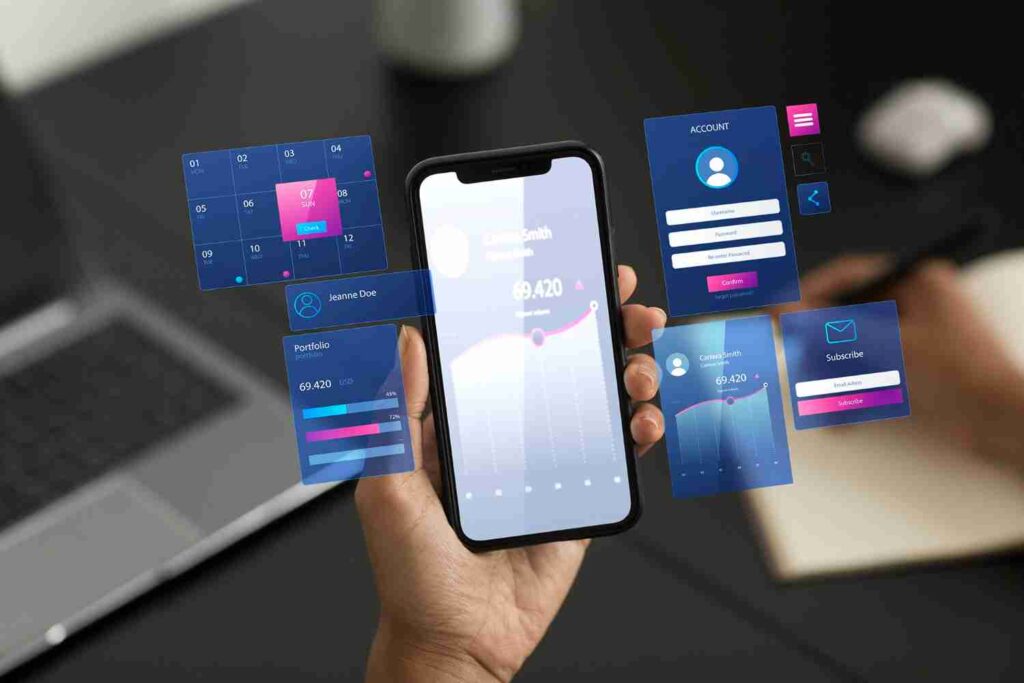J2ME Mobile Application Development
IT Chimes provides outsourcing services and offshore development which is based on years of experience of projects on mobile application development using J2ME. J2ME is a JAVA 2 Platform. Devices running through J2ME application consists large portion of mobile user base. These are low memory devices which support wide range of different mobile applications.
Our Services
Field Service
IT Chimes will offer you result oriented solution. Increase the productivity by minimizing your responding time to the requirement of customers.
Social Networking
IT Chimes uses Location Based Services(LBS) for mobile technology for providing the users with a better social networking experience.
Custom Application Development
We deliver a comprehensive service range for optimizing J2ME application in the best way possible for taking your business to next level.
QA/Testing Services
We are equipped with team of developers who have complete knowledge and experience for making this application a success. We even have IT diagnostics, integration of system and business consultants among each other for testing our efficiency and flexibility of our application.
Long Term Support And Maintenance
We believe in helping our customers at every single step. As soon as new phones are announced we evaluate them and then add them in the supporting pages. IT Chimes keep on verifying and adding new functionality as required.
Benefits Of J2ME Apps Development
- J2ME is the accepted platform for important mobile manufacturers together with Samsung, Nokia, BlackBerry, Motorola, iPhone and Sony Ericsson.
- The J2ME apps can also be simply ported across many mobile devices.
- They offer an extremely scalable & safe platform for the designing of mobile apps.
- With the J2ME mobile app technique, a developer or consumer is able to utility even when there is no wireless coverage.

Why Us
Better Functionality
We Apply the J2ME architecture to a wide range of mobile devices for rendering better functionality serving for wide range of business requirements. We creating high-end Application Programming Interface (API) for the better usability.
Easy Data Flow
IT Chimes Create applications that utilizes networks for easy flow of data and information. Develop various Bluetooth applications for better communication of devices. Incorporate rich featured multimedia applications for making the most of your device. Implement rich features like local data storage using Record Management Systems
Meeting Objectives
IT Chimes analysis your business objectives, through conceptualising mobile application we create the flow of application. We deploy and develop these application according to your needs. (downloadable or enterprise application)
Assured Deliverance
We have a Commitment towards delivering the best at a lower cost. Our services are based on our several year of experience.
Add Your Heading Text Here
J2ME consists of two main components: the Configuration (like CLDC or Connected Limited Device Configuration) and the Profile (like MIDP or Mobile Information Device Profile). The configuration defines the Java Virtual Machine and core libraries, while the profile adds APIs and libraries specific to the type of device.
J2ME is used primarily for developing mobile games, utility apps, messaging apps, and other small-scale applications that need to run on devices with limited processing power and memory.
J2ME offers portability, security, and a rich set of APIs that make it suitable for mobile devices. It is lightweight, efficient, and optimized for limited resource environments, making it ideal for developing applications for feature phones and other low-powered devices.
Common development tools for J2ME include Sun Java Wireless Toolkit (WTK), NetBeans with J2ME plug-ins, and Eclipse with the Mobile Tools for Java (MTJ) plug-in. These tools provide the necessary environment for coding, testing, and debugging J2ME applications.
J2ME is designed for small devices with limited resources, while J2SE (Java 2 Platform, Standard Edition) is for desktop applications, and J2EE (Java 2 Platform, Enterprise Edition) is for server-side applications. J2ME applications are lighter and optimized for devices with constrained memory, processing power, and storage.
J2ME has become less popular with the rise of more powerful mobile platforms like Android and iOS. However, it is still relevant in certain regions and specific industries where feature phones are common, and in embedded systems where resources are limited.
J2ME applications run in a secure sandbox environment, which restricts access to device resources and protects against malicious code. The platform also supports encryption, authentication, and permissions management to ensure secure application execution.
Developers face challenges like limited device resources (memory, processing power), varying screen sizes, and differences in device capabilities. Fragmentation is also a significant issue, as different devices may implement J2ME specifications differently.
Testing J2ME applications typically involves using emulators provided by development tools such as Sun Java Wireless Toolkit or device-specific SDKs. Testing on actual devices is also crucial to ensure compatibility and performance in real-world conditions.
